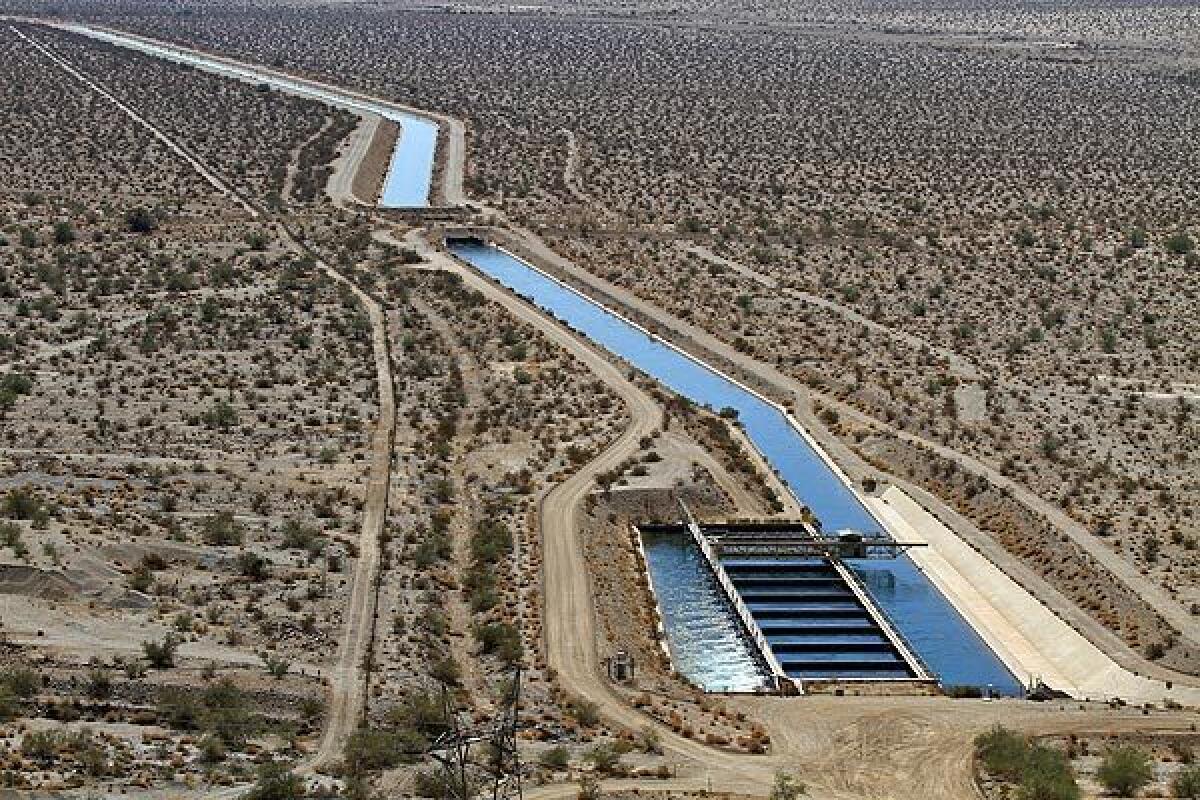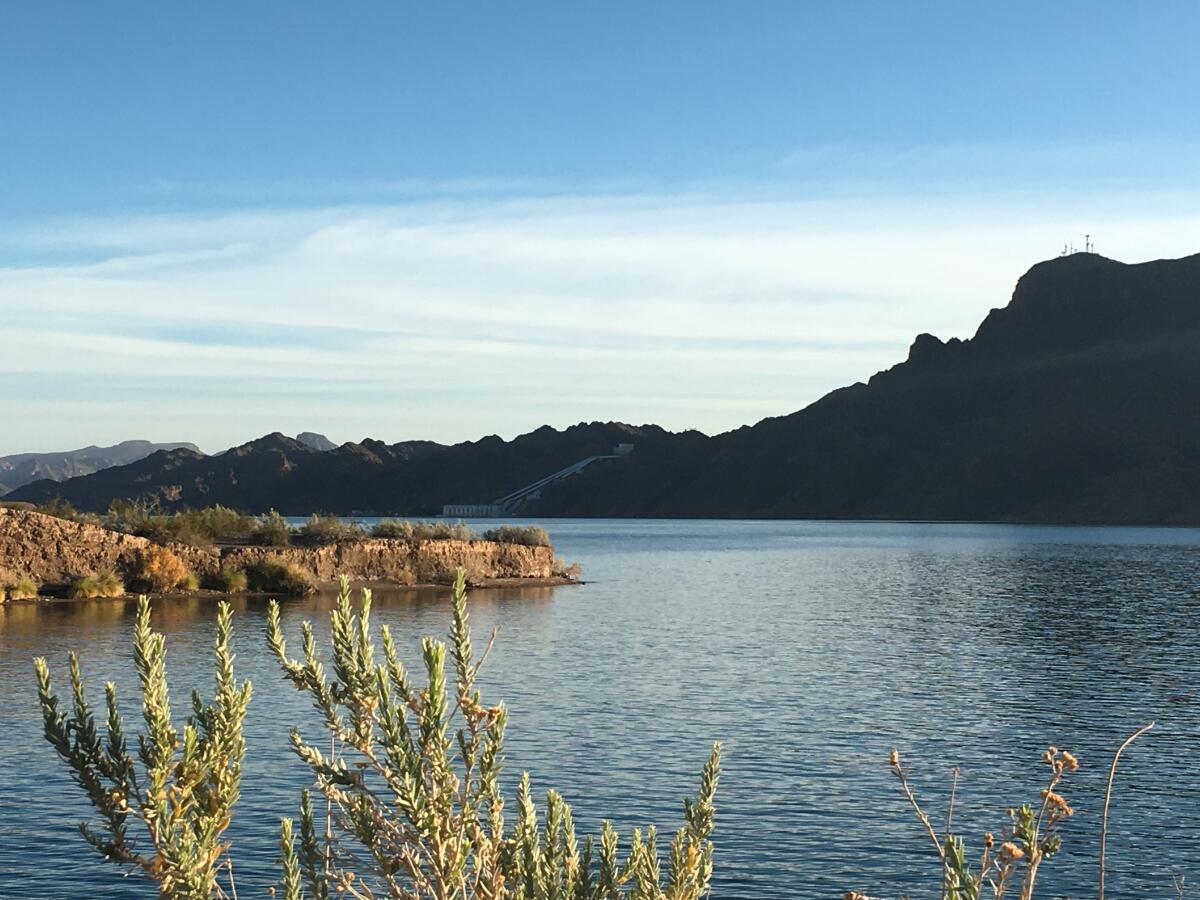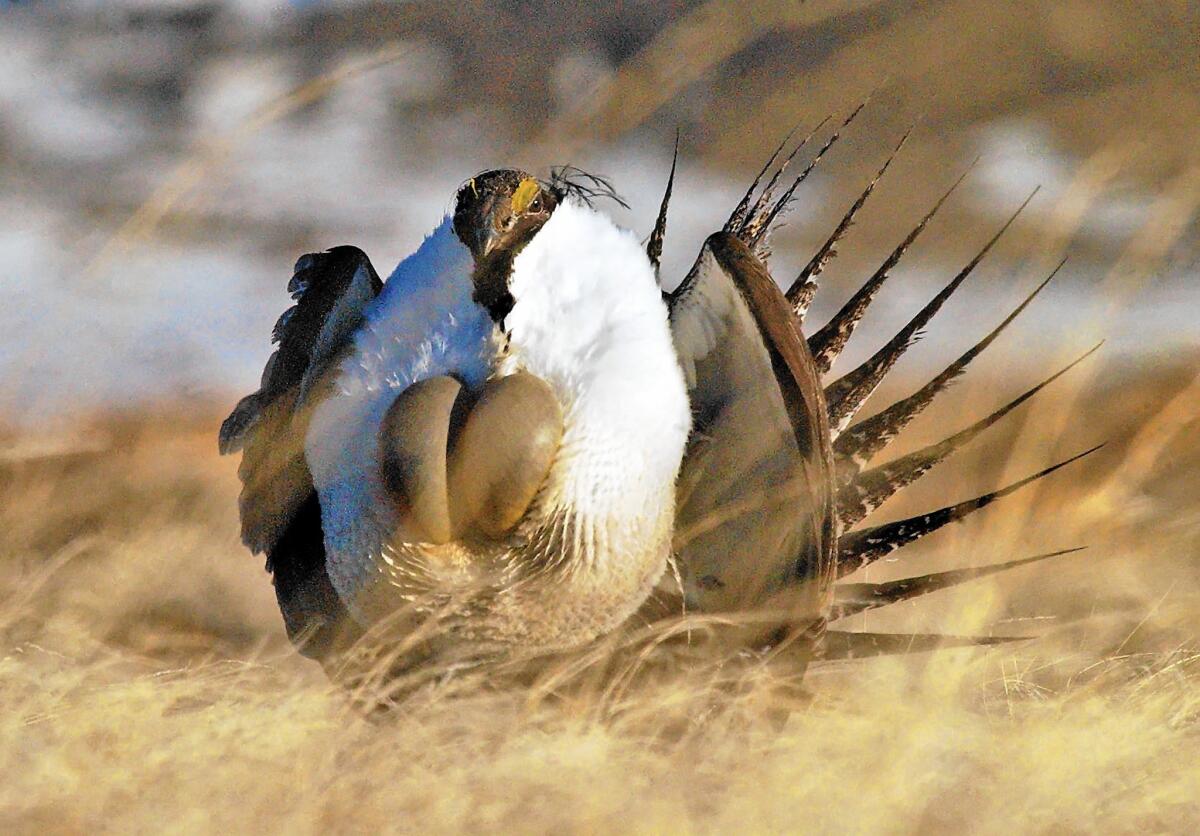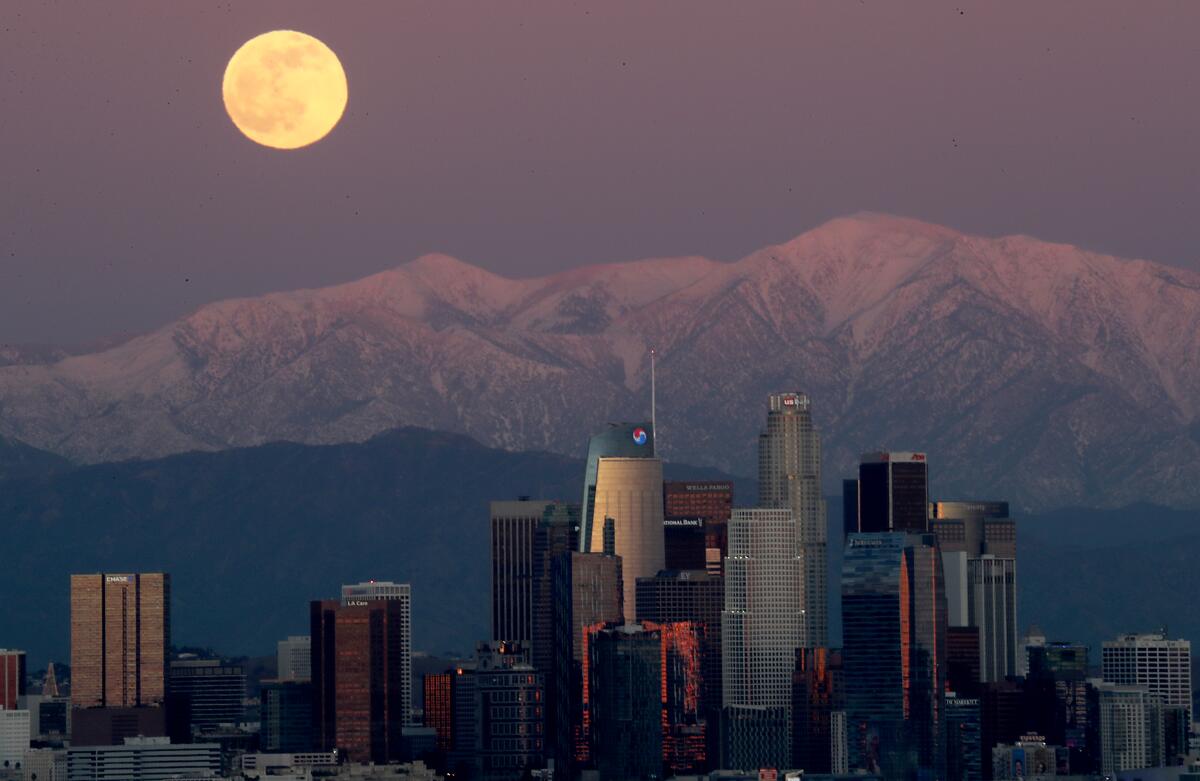Boiling Point: Climate change spells trouble for the Colorado River. But there’s still hope

This is the Dec. 31, 2020, edition of Boiling Point, a weekly newsletter about climate change and the environment in California and the American West. Sign up here to get it in your inbox.
One of the best road trips I’ve ever taken was a sightseeing tour of the Colorado River, where it straddles the California-Arizona state line. I stood at the edge of Imperial Dam near the Mexican border, which diverts water to the farm fields of the Imperial Valley, then drove north to Cibola National Wildlife Refuge, home to lots of birds. I walked along the river in Laughlin, Nev., where there’s a hotel called the Colorado Belle that looks like a boat, and in Needles, Calif., where Snoopy’s brother Spike lives.
I also hiked along Lake Havasu, where I insisted to my friend Chris that we continue a few miles farther than planned for a better view of Whitsett Intake. It’s the starting point of the Colorado River Aqueduct, and it lifts water from the reservoir more than 291 feet uphill, over the Whipple Mountains, beginning a 242-mile journey toward Los Angeles.
As the sun set over the lake, I found myself marveling at a simple fact: I’d been drinking this water my whole life.

It’s not just me, of course; 40 million people and five million acres of farmland drink from the Colorado. And the river is in trouble: Hotter temperatures caused by climate change are sapping its flow, and even without global warming the amount of water that’s been promised to cities, farmers and tribes over the last century is almost certainly unsustainable. Lake Mead and Lake Powell, the river’s two largest reservoirs, are currently 39% full and 42% full, respectively.
Toward a more sustainable California
Get Boiling Point, our newsletter exploring climate change, energy and the environment, and become part of the conversation — and the solution.
You may occasionally receive promotional content from the Los Angeles Times.
With the seven western states that draw from the Colorado notifying the federal government this month that they’re ready to start renegotiating their water use ahead of a looming deadline, I decided to call up Jeff Kightlinger.
For 15 years, Kightlinger has served as general manager of the Metropolitan Water District of Southern California, which operates the Colorado River Aqueduct and delivers water from other sources, including the Sacramento-San Joaquin River Delta, to agencies serving nearly 19 million people. He’d planned to retire at the end of this year but is staying on into 2021 due to the pandemic.
The following highlights from our conversation are edited and condensed for clarity.
ME: So as we’re having this conversation, it’s raining hard in Los Angeles for the first time all season. Most of the state has been experiencing drought conditions recently. Could this be the beginning of wetter times?
KIGHTLINGER: Probably not. We’re still well below normal precipitation. The Sierras finally look like they’re going to start snowing this weekend, but last year was a dry year. Of the last 20 years, about 15 have been below normal in California. A little bit of nice respite helps, but I don’t think it changes the overall trend, which is definitely warming and drying.
ME: Let’s look ahead to these negotiations that will determine how the Colorado River Basin states share water post-2026. What changes do you think will be needed, and are there reasons for optimism?
KIGHTLINGER: We have a shrinking pool of water, there is no doubt about it. And we’ve over-allocated it. So I think first we have to take some cutbacks. The Drought Contingency Plan that we negotiated last year was a preliminary step.
The good news is the cuts don’t have to be tomorrow — we’ve got time to phase them in and grow other supplies gradually. And then we start dealing with climate change. The next 25 years look like it’s going to be a real hard haul, but I believe it’s doable, as long as the parties can be smart and work together. It’s not some sort of sub-Saharan disaster.
ME: As part of the Drought Contingency Plan, California agreed to take cuts if Lake Mead gets too low. It was a big concession because California has older and therefore more senior water rights, which in theory should protect the state from losing a single drop even if Arizona and Nevada dry up. Do you think that prioritization is sustainable in the long run?
KIGHTLINGER: California does have seniority, and it’s not just an accident of history. We grew earlier, and we are putting the water to beneficial use. So if it were yanked away equally from all three states, the economic impacts would be greater in California. Arizona, for instance, is banking much of its Colorado River entitlement and not using it.
But it would be foolishness to say we’re going to insist on our legal rights come hell or high water and give up nothing. Politically, we can’t let Arizona and Nevada dry up. They’re our partners on the river. We all have to share in this.
ME: I saw a press release about your agency and Southern Nevada Water Authority — the water provider for Las Vegas — partnering on a wastewater recycling project in Southern California. It sounds like Nevada would help pay for the project, and in exchange for some of the water it generates for us, they’d get some of our Colorado River water from Lake Mead. Tell me how that came about.
KIGHTLINGER: We just did this deal, and I’m really excited about it. We are looking into developing what would be the largest recycled water facility in the nation. This would be in Carson, where the L.A. County Sanitation Districts have a very large treatment plant that’s currently sending 250,000 to 300,000 acre-feet of wastewater out to the ocean every year. We want to build a recycling plant and use that water as replenishment for the major groundwater basins near L.A.
This is a $3-4 billion project. It’s going to take a fair amount of time to get operational, up to maybe 15 years. And who can afford expensive recycled water along with Southern California? Las Vegas can. So they’re going to put up some good-faith money to help us do the environmental review, and I’m hoping when the time comes that they’re a full-fledged partner.
This kind of partnership can make us all more reliable. We know we have to come up with new ways of dealing with the Colorado River shrinking. Yes, you can do it all with cutbacks, but that’s really painful. If we can pull this off, it will be the first, but I expect over the next 50 years you’ll see more of these types of programs that will involve Denver, Phoenix and other major cites.

ME: California’s Imperial Valley has the largest share of water on the Colorado River, and nearly all of it is used to grow vegetables and other crops. But the Imperial Irrigation District backed out of the Drought Contingency Plan, and your agency ended up taking on the voluntary water cutbacks they originally contemplated, on top of your own share. What role do you think IID can or should play in future negotiations on the Colorado River?
KIGHTLINGER: They need to become a responsible, reliable party. The quote you always hear from IID board members and their lawyers has been the old Willie Sutton line, “Why do people rob banks? That’s where the money is.” The people in IID seem to go, “Why are all the urban areas coming and attacking us? Because we’ve got all the water.”
And the reality is we aren’t attacking IID. We aren’t trying to steal their water. But as a practical matter, when we start dealing with long-term hydrologic impacts and cutbacks and climate change, everyone needs to share in this. And if they just insist on saying they have a strong legal priority, and to hell with everyone else, that’s not going to lead to a conducive solution for anybody.
To their credit in the Drought Contingency Plan, they were at the table. I thought they were picking up a reasonable share of the cuts. And at the last minute their board decided to play brinksmanship and make more demands. And eventually we said, “Let’s just get this done without them.” And we stepped up and got it done.
ME: Well, they were demanding solutions for the Salton Sea, which is a public health and environmental crisis. They’ve had trouble getting any kind of help to stop the sea from shrinking and kicking up hazardous dust and destroying migratory bird habitat. And one of the reasons for the crisis is all the water Imperial has already been pressured into selling to urban areas. Do you think the rest of the Southern California has a responsibility to help them?
KIGHTLINGER: While I wouldn’t agree it’s a responsibility, I would agree it’s in our self-interest to help the Salton Sea issue get stabilized, because otherwise it’s impossible for IID to be a responsible partner. I don’t see the Salton Sea being restored to some past glory, but I do see stabilization as something that is needed for the whole Southwest.
ME: So how do you get that done?
KIGHTLINGER: You hopefully get a better working relationship between the state and federal administration. We need to solve this Colorado River issue. What do you have at stake? Probably the most dynamic chunk of the American economy, the whole Southwest. There is a national concern here. And so the state and federal governments need to step up. We need to get an infusion of money, and we have to be realistic how it’s spent. We have to take care of the human health issues.
::
Here’s what else is happening around the West:
TOP STORIES
Climate change is a mental health crisis. My colleague Brian Contreras wrote about the psychological toll of worsening wildfires, air pollution and other climate consequences on young people in particular, some of whom fear that their futures are going up in smoke. If there’s one silver lining, it’s that many teenagers and twentysomethings are channeling their anxiety into activism.
Gov. Gavin Newsom declared a “climate damn emergency” as California burned. But his actions have not always matched his rhetoric: The San Francisco Chronicle’s Dustin Gardener reports that state officials approved way more oil and gas drilling permits than usual this year. It’s worth noting that Newsom’s political advisor Jason Kinney, whose French Laundry birthday party the governor was slammed for attending, works for a lobbying firm that represents one of the state’s biggest oil and gas producers.
The Trump administration rejected calls to toughen limits on smog-forming pollutants, despite scientific evidence that current limits are insufficient. Here’s the story from the Washington Post’s Juliet Eilperin and Dino Grandoni. In addition to harming human health, new research suggests that smog pollution is terrible for migratory birds, as Amy Joi O’Donoghue reports for the Deseret News. Smog has also helped fuel wildfires by contributing to pine tree deaths, per LAist’s Jacob Margolis.
THE ENERGY TRANSITION
San Diego claims it reduced planet-warming emissions 25% over the last decade, but the numbers are wrong. City officials have been called out on the misleading data before, but they keep using it, Joshua Emerson Smith reports for the San Diego Union-Tribune. The problem has to do with a faulty baseline that greatly overestimates tailpipe emissions from cars and trucks.
The world’s largest battery is coming online soon near Monterey, on the California coast. It’s one of several giant energy storage projects being built across the state, a boom driven by dramatic cost declines, as Cheryl Katz reports for Yale Environment 360.
I’ve been riveted by Bloomberg’s latest reporting into carbon offsets, which are used by many companies to take credit for fighting climate change without reducing their own emissions. Ben Elgin dug into a Nature Conservancy program that has seen companies including Disney pay to protect forests that in many cases are already protected. Elgin and Zachary Mider also explored a company that helps Shell, United Airlines and others claim credit for planting trees that have already been planted.
AROUND THE WEST

There are hardly any sage grouse left in Northern California. There’s an herbicide that could selectively kill the nonnative grasses crowding out the colorful bird’s sagebrush habitat, but the Sacramento Bee’s Ryan Sabalow thinks there’s a good chance environmental opposition will prevent its widespread use. This article is the latest in Ryan’s excellent series on ecological and human crises on the Golden State’s rural northern edges. See also this piece on the disease decimating wild ducks and shorebirds.
Utah just sold oil and gas leases on state land that would be surrounded by Bears Ears National Monument if Joe Biden restores the monument’s original boundaries, which were diminished by President Trump. Here’s the story by Zak Podmore at the Salt Lake Tribune. Drilling could go forward even if the monument is restored, but it’s also possible the lands will ultimately be protected as part of an exchange with the federal government.
The environmental writer Barry Lopez died this week after a battle with prostate cancer. He spent 50 years exploring the natural world, as the AP noted in its obituary. I’m not personally familiar with his writing, but Boiling Point editor Stuart Leavenworth says I need to read his gorgeous descriptions of the West, including traveling down the Colorado River, in “Crossing Open Ground” and other books.
POLITICAL CLIMATE
President Trump did, in fact, sign that coronavirus relief and government funding bill, which as I mentioned last week includes a bunch of climate and clean energy stuff. It also includes $638 million to help local utilities forgive overdue water and sewer bills, although that’s not nearly enough to address the growing water-debt crisis, Circle of Blue’s Brett Walton reports. Another piece of the legislation could unlock millions of dollars for Salton Sea restoration, per the Desert Sun’s Mark Olalde.
The California Public Utilities Commission fired its executive director this year, claiming she had violated hiring protocols. Alice Stebbins is now suing the agency, arguing she was really terminated for bringing to light $200 million in missing fines and fees that should have been paid by regulated companies. Bay City News Foundation’s Scott Morris explores her allegations.
ONE MORE THING
I’ve written a lot about the natural gas industry’s efforts to protect itself from climate policies, including claims that gas is good for people of color. Recently, I’ve noticed folks with ties to Southern California Gas Co. promoting the pro-gas views of Timothy Simon, board chair of the California African American Chamber of Commerce and a former member of the Public Utilities Commission.
One thing not disclosed in the various places I’ve seen Simon argue that gas is good for the environment and helps keep energy costs down? According to his directory page on the Bar Assn. of San Francisco’s website, he’s worked as a consultant to SoCalGas on “balanced energy policy” — the company’s term for preserving the role of gas.
OK, JUST ONE MORE THING...

A bit of wet weather won’t make our water problems go away, but the snow-capped mountains surrounding Los Angeles right now are totally gorgeous. L.A. Times photographers took some amazing pictures during and after the storm.
See you next year.
We’ll be back in your inbox next week. If you enjoyed this newsletter, please consider forwarding it to your friends and colleagues.
Updates
11:39 a.m. Dec. 31, 2020: A previous version of this story included a quote referencing Willie Horton. It should have referenced Willie Sutton and has been updated to reflect that.




